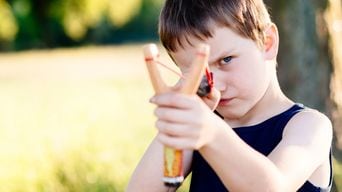English abstract
Traps of new coronavirus antibody tests
Japan won only by the advantage of the ground, not strategy
In Japan, cases of COVID-19 (SARS-CoV2) are gradually declining. In particular, the antibody-positive rate to the virus is found to be only 0.1% in Tokyo (Reference 1). Against this background, will Japan experience another wave of the pandemic in the future? The study proposes that the scene is unlikely. Furthermore, the study considers it the “pitfall of the antibody test” for COVID-19.
In other parts of the world, Vietnam is one of the first countries to overcome the pandemic with a cumulative onset of only 300 people and zero death toll. Surprisingly, Vietnam shares a broad border with China spanning 1,400 km with many people crossing the said border (Reference 2). The situation in China is similar. Wuhan in Hubei Province was identified as the epicenter. However, many people from other provinces did not suffer from COVID-19.
The same is true for SARS, for which the outbreak was less severe except for the epicenter Guangdong (Reference 3). Taiwan has also succeeded in controlling new coronavirus infections and is one of the countries where SARS has become an epidemic. It is famous because the last case of SARS was confirmed in this country (Reference 4). However, the overall picture of the SARS epidemic in Japan remains unclear. In 2003, no devices or genetic tests were yet developed for detecting SARS infection. In fact, the National Institute of Infectious Diseases in Japan reported that the situation was difficult at the time (References 5 and 6).
Currently, very few people in Tokyo were positive in the COVID-19 antibody test. In contrast, approximately 6% of the population in the city was PCR-positive in April 2020. This finding is in contrast with expectations as the number of PCR-positive cases in the city should have increased further with the increase in outbreaks (Reference 7). It seems contradictory.
Current commercial antibody tests used clinically are very rigorously designed. The reagents were designed to remain non-reactive to other coronaviruses, such as SARS, MERS, as well as many strains of seasonal coronaviruses (Reference 8). The study infers that the strict selectivity is the absolute pitfall of the tests. In an antibody test with the abovementioned narrow window, cases who responded to the conventional coronavirus antibody (cross-antibody) will produce a negative result. This tendency is the first “antibody test trap.” However, many scholars consider this statement “a castle in the air.”
In fact, several interesting papers supporting it were published. Many studies reported that selective antibodies increased in only half of severely ill patients who were infected with COVID-19 and confirmed by RT-PCR (Reference 9). Reviewing data from a paper published by Nature Medicine, many people showed low antibody titers, which can spread in a very large range (Reference 10).
Dr. Derek Lowe also cited a study on cell-mediated immunity published in Cell, which focused not only on antibodies but also on the “good news about the human immune response to coronaviruses.” In other words, apart from antibodies, the human immune system responds to the new coronavirus as well (Reference 11). However, mankind has not developed a method for examining total immune resistance. This aspect constitutes the second “antibody test trap.”
In Japan, seasonal coronaviruses are one of the main viruses during the winter season. People in countries around China, including Japan, have been repeatedly infected with seasonal coronaviruses, such as SARS, that have undergone countless unknown mutations. One of the main symptoms of contact-borne coronavirus is diarrhea. However, detection is difficult as many people may have been diagnosed with acute gastroenteritis instead of bronchitis or pneumonia.
As such, the study proposes that the abovementioned scenario is the reason why COVID-19 did not spread in Japan. In other words, Japan won not by strategy but by the advantage of location.
【参考文献】
1.Tokyo has 0.1% positive rate for coronavirus antibodies, government says
2.ベトナム・中国間の国境線画定・領土問題
3.Spatial pattern of severe acute respiratory syndrome in-out flow in 2003 in Mainland China; BMC Infectious Diseases, 31 December 2014
4.SARS国別報告数まとめ
5. SARS(重症急性呼吸器症候群)とは
6.SARS コロナウイルス. 国立感染症研究所ウイルス第3部. 田口文広.
7.COVID-19症状ない他疾患患者の約6%にPCR陽性;日経メディカル4月24日
8.Elecsys® Anti-SARS-CoV-2(RUO)
9.Systemic and mucosal antibody secretion specific to SARS-CoV-2 during mild versus severe COVID-19
10.Antibody responses to SARS-CoV-2 in patients with COVID-19, Nature Medicine volume 26, pages845–848 (2020)
11.Good News on the Human Immune Response to the Coronavirus、Targets of T Cell Responses to SARS-CoV-2 Coronavirus in Humans with COVID-19 Disease and Unexposed Individuals,




